 Tides --- | ---
Telescopes
Tides --- | ---
Telescopes

 Tides --- | ---
Telescopes
Tides --- | ---
Telescopes

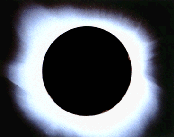
Reading:
Chapter 4-2, 8-1 (ZG4)
 |
Key Question: | How long is it between similar sets of eclipse series? |
|---|---|---|
 |
Key Principle: | Wave mechanics |
 |
Key Problem: | How long is the eclipse year? |
 |
Key Quote: |
"everything under the sun is in tune
but the sun is eclipsed by the moon" - P. Floyd |
The shadow cast by an opaque screen in front of a point-like light source is always sharp. However, the shadow cast by a body eclipsing an extended light source like the Sun is "fuzzy". There is a region surrounding the dark inner shadow that is not as dark - from those points looking back toward the light the screen only partly covers the light. This is called the penumbra, and is distinguished from the dark inner shadow, or umbra.
Experiment: try looking at the shadow of your hand on a wall on a sunny day.
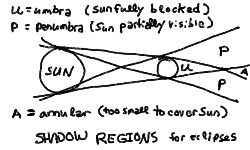
The umbra of the Earth is a cone that extends 1.4 x 10^6 km anti-sunward. The Moon's orbit intersects this 27% of the way along, and at this point the umbra is around 2.7 times the Moon's diameter in cross-section.
The umbra of the Moon extends only around 383000 km, compared to its distance from the Earth of 384000 km. Only when the Moon is at perigee and is closest to the Earth in its elliptical orbit can a total solar eclipse occur. If it is more distant, the umbra falls short of the Earth's surface and the Moon is smaller than the Sun in angular size. During a full eclipse the Sun is seen in a ring or annulus around the edge of the Moon --- thus this is know as an annular eclipse.
The average angular diameter of the Sun as viewed from Earth is 31'59", and varies due to the ellipticity of the Earth's orbit by about +/- 1.7%. The average angular diameter of the Moon is 31'5", and is smaller than that of the Sun. Thus, in the absence of variation, the Moon could not cover the entire Sun. However, the ellipticity of the Moon's orbit (combined with the fact that we view the Moon not from the center of the Earth but from the surface) causes the apparent size of the Moon to vary by almost 7% --- the maximum angular diameter of the Moon is 33'16" and is larger than even the maximum angular diameter of the Sun. Thus, the Sun can be totally eclipsed by the Moon.
The Law of Reflection:
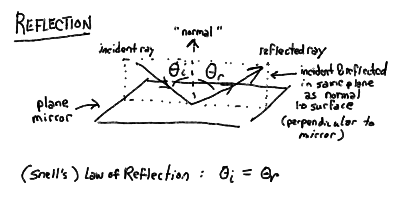
Refraction in a transparent medium:
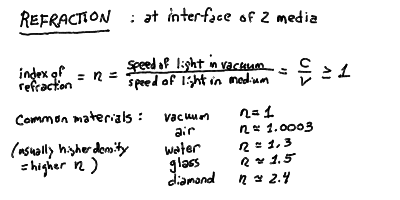
Bending of light rays at medium interface:
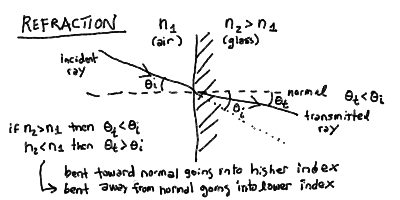
 Prev Lecture ---
Prev Lecture ---
 Next Lecture ---
Next Lecture ---
 Astr11 Index ---
Astr11 Index ---
 Astr11 Home
Astr11 Home
smyers@nrao.edu Steven T. Myers